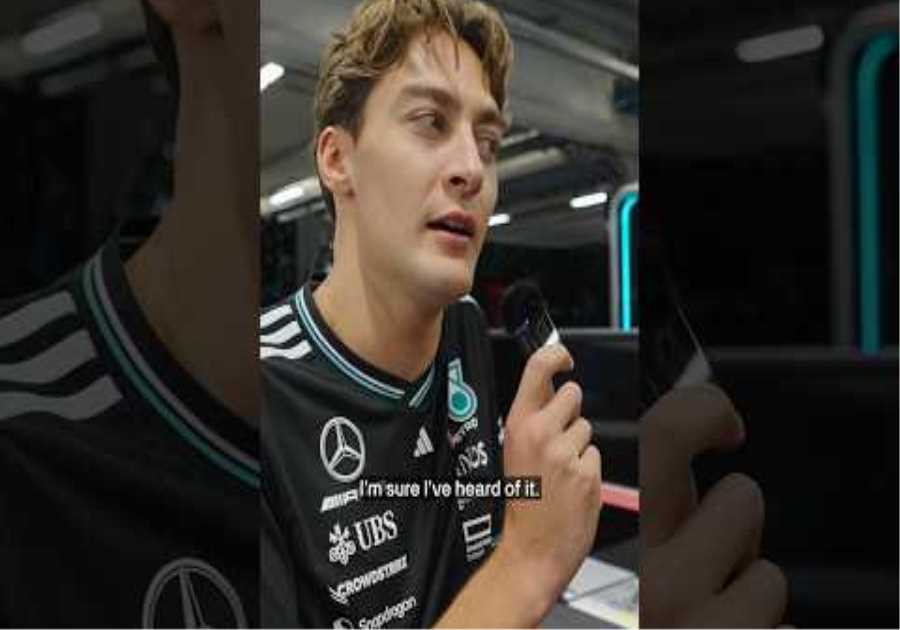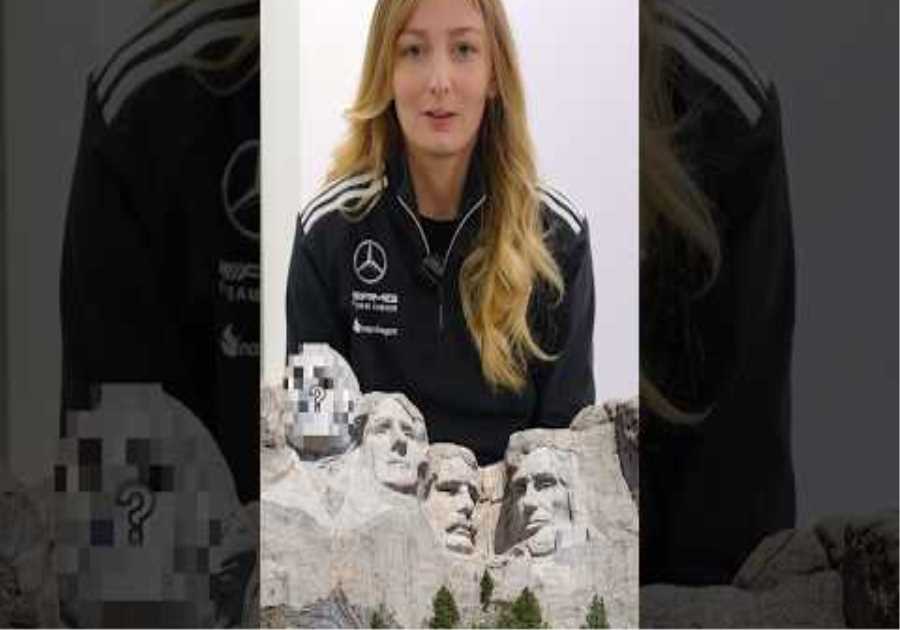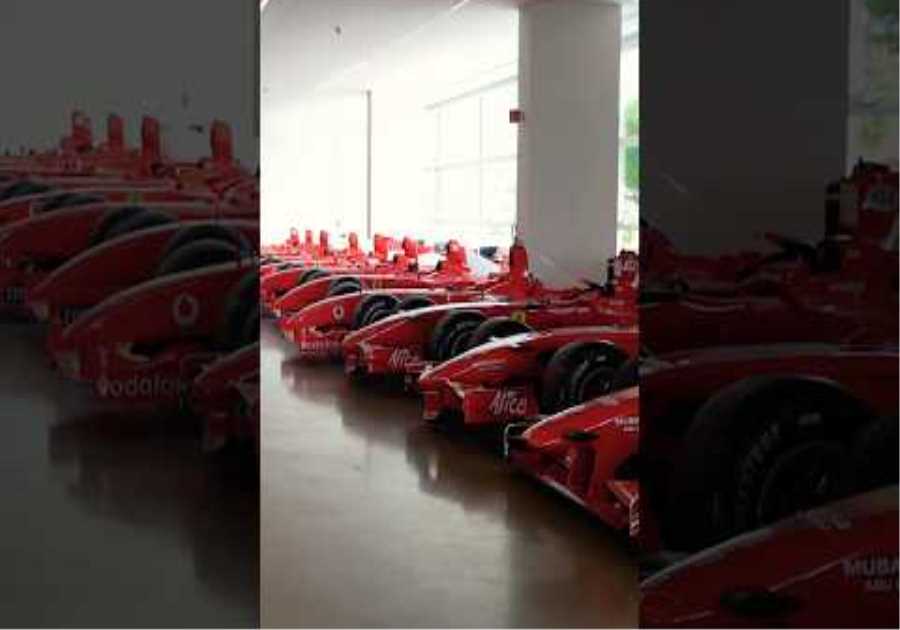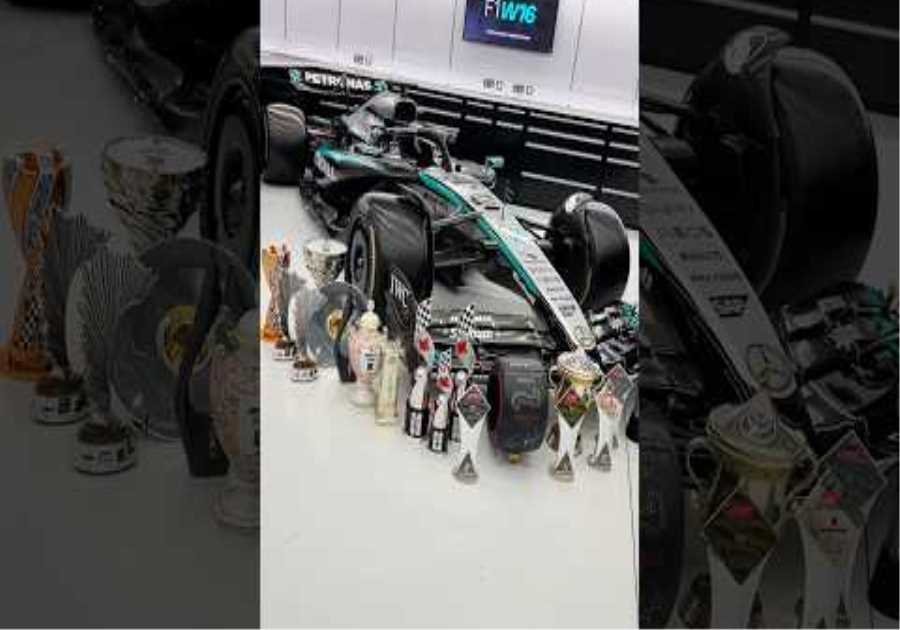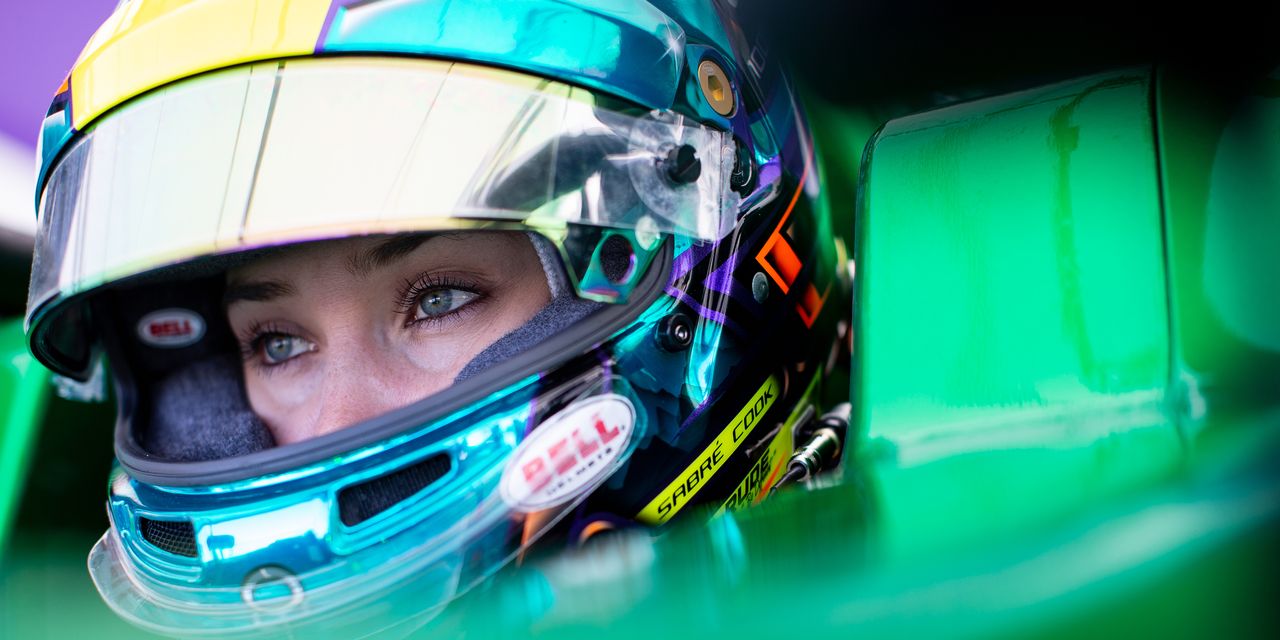
On a cold spring day in 2019, Catherine Bond Muir, a British former corporate financier and lawyer from Surrey, stepped out onto the wet pavement of the Hockenheimring racing circuit in Germany’s Upper Rhine Valley. Bond Muir, who is 53 and exudes a let’s-get-on-with-it attitude, is not the crying type. But as she stood there, her fingers going numb from the cold, she wondered if she could allow tears to overwhelm her for just a few moments. She had spent the past four years trying to convince sponsors, promoters and organizers at the top tier of motorsport that W Series, the international women’s-only motor-racing series that she founded, was not just a good idea but a necessary one. And now here she was, standing on a track that has hosted Formula 1 races since the ’70s, waiting for 18 female drivers to make their way to the starting line for W Series’ first, history-making race. As each car pulled onto the track, she visualized the faces of the women whose lives she was about to change and thought, “I’ve f—ing done it.”
A phrase that Bond Muir and her team often use to describe W Series—“If you can see it, you can be it”—sums up the series’ ultimate goal: to create new role models for young female racing drivers, encouraging more girls to get into the sport from an early age and more sponsors to support female drivers. It’s been nearly 45 years since a woman qualified and competed in a Formula 1 World Championship race. Out of the more than 900 drivers who have raced in an F1 Grand Prix, only two have been women. (The first was Maria Teresa de Filippis, in 1958; the second was Lella Lombardi, in 1975 and 1976.) Nothing technically prevents women from reaching the top tier of the sport except for the two things that matter the most—money and opportunity.
W Series aims to provide women with exactly that. Drivers race in Tatuus T-318 Formula 3 race cars (similar to Formula 1 cars, just not as fast). All cars and corresponding equipment have the same specs, ensuring that the races are won by the most talented drivers—rather than those with the wealthiest backers or the fastest cars. And finally, there’s a $500,000 prize for the winner.
“If men and women can supposedly race equally, then why wasn’t that happening?” says Catherine Bond Muir, the founder of W Series, the international women’s-only motor-racing series.
Photo:
W Series
“The fact that W Series is free, pays your expenses and there’s prize money is crazy,” says British former F1 champion Damon Hill from his home in Surrey. “I wish something like this had been around when I was racing.”
The series also provides a platform for drivers to show potential sponsors what they can do. The 2019 W Series races were broadcast live on Channel 4 in the U.K. and subsequently televised in 50 countries, reaching up to 350 million households; the series was the second-most-watched women’s sport in the U.K. behind soccer that year.
W Series has brought together the largest number of professional female drivers to compete in one championship. The first winner, 23-year-old British driver Jamie Chadwick, has gone on to compete in the Formula Regional European Championship and the Extreme E series and was signed on as a development driver for the Williams Racing Formula 1 team. (Development drivers get to immerse themselves in F1 teams and help them prepare for race weekends.) W Series drivers have gone on to compete in international series and races like 24 Hours of Le Mans, the Indy Pro 2000 Championship and the F3 Asian Championship; some now work for F1 teams like
Aston Martin
and Williams.
Reigning 23-year-old W Series champion Jamie Chadwick.
Photo:
W Series
The 2020 W Series was canceled due to the pandemic, but the extra year gave Bond Muir time to secure her biggest win yet: a partnership with this year’s Formula 1 season. All eight races in this year’s W Series will take place alongside Formula 1 Grands Prix—on the same tracks, just one day apart. The series will begin with a race in Spielberg, Austria, on June 26, and then move on to races in Silverstone, England; Mogyoród, Hungary; Stavelot, Belgium; Zandvoort, Netherlands; Austin, Texas; and Mexico City, among other locations. When the announcement was made, Formula 1’s managing director of motorsport, Ross Brawn, called W Series a beacon in bringing greater diversity to motorsport.
People often point out that it’s not just tough for women to get to F1—it’s tough for everyone. Even so, female drivers are the first to be locked out of opportunities in single-seater racing because of the investor-driven model. Long before they go pro, drivers have to finance their amateur careers as they climb the ranks of leagues and divisions that lead to F1 and other professional racing series. Unless you come from a wealthy family (which a lot of professional drivers do), this money comes from sponsors. Sponsors want someone who they believe is going to be the next Lewis Hamilton. And—looking at the history of motorsport—that person is less likely to be a woman. Who’s going to back a female driver at the professional level when there hasn’t been one around for decades?
In a 2016 TV interview, Damon Hill said it would be “extremely unlikely” that a competitive woman will race in Formula 1 in his lifetime. Since then, he’s had a change of heart. “Having been at the sharp end of motorsport, I can tell you it’s brutal,” Hill says. “But competitiveness, speed, fear—none of these are reasons why women haven’t been able to reach the top tiers of motorsport. The barrier in motorsport is opportunity.”
New 2021 W Series designs at the Anglesey Circuit.
Photo:
W Series
There is only one female test driver in F1: Tatiana Calderón, who rose from Formula 2 and is now a test driver for Alfa Romeo. F1’s Ross Brawn says there is still more work to be done. “Whilst there is a lot of skill and physical strength needed to become an F1 driver, we continue to work with the FIA [Fédération Internationale de l’Automobile, the governing body of F1] to make sure that regulations allow for more accessibility,” Brawn says. “Having the W Series join us for the first time this season ensures we…continue to champion and build diversity across the sport.”
Many of the drivers competing in this year’s W series have had to come up with creative ways to either earn enough money to keep racing or ensure there’s a plan B if their career is cut short. British driver Abbie Eaton, 29, was a test driver for the Amazon TV series The Grand Tour. Jessica Hawkins, 26, who is also British and finished 11th in the first W Series, doubles as a stunt driver; her most recent work will appear in the upcoming James Bond film, No Time to Die. Spanish driver Belén García, 21, is currently completing a telematics engineering degree; she is also a keen pole-vaulter. Russian driver Irina Sidorkova, 17, tried her hand at modeling before deciding it wasn’t for her. “I had to change dresses every 10 minutes,” she has said. “Changing tires, yes. Changing dresses, no.”
Alice Powell, 28, spends her off-track time helping out at her father’s construction company, unblocking drains and urinals. W Series 2019 was her first time on the track in four years. “I won a championship in Asia in 2014, and obviously you then think, Something’s going to happen [now],” Powell says on the phone from her home in the Cotswolds, in southern England. “[But] without the sponsors…it was kind of going to be impossible to race.”
British driver Jessica Hawkins, 26, who finished 11th in the first W Series, at this year’s preseason test.
Photo:
W Series
This is the problem Bond Muir hopes to solve. She spent the majority of her professional life dealing with mergers, acquisitions and IPOs in the world of sports, then took a break after the birth of her son in 2013. When she wanted to explore a completely new career path, some friends casually suggested a women’s-only motor-racing series. Bond Muir was intrigued. She’d been a Formula 1 fan all her life and had often questioned why there weren’t more female drivers competing in the sport. However, her initial research left her unconvinced; since men and women could theoretically already race against each other, there wouldn’t be much need for a separate segregated series. After doing more research, she found that the number of women racing in single-seater motor-racing series around the world had gone down in recent years. “So actually, the situation for women driving was just getting worse,” Bond Muir says. Starting in 2015, she spent the next two years approaching angel investors, most of whom told her the same thing: “No one watches women’s sport.” Plus, some of the few women who had made it to the top of motorsport seemed none too pleased about the concept of a segregated series.
Pippa Mann, 37, the British racing-car driver who made her name in IndyCar, compared W Series to Margaret Atwood’s The Handmaid’s Tale in a scathing post on her website. “As female racers we are racers first, and our gender comes second,” Mann wrote. “We grew up dreaming of winning races, and winning championships, against everyone—the same as every male racer does. We did not grow up dreaming of being segregated, and winning the girl’s only cup.”
A W Series engineer at the preseason test at the Anglesey Circuit, in Wales, in May.
Photo:
W Series
Bond Muir knew she needed to work on her messaging if she was to convince other drivers that a women-only event could actually be a good thing. “This idea of segregation, I’ve always thought it was a complete red herring,” Bond Muir says. “I didn’t understand the logic. [Around this time] there were no women racing in…Formula 2 or Formula 1. If men and women can supposedly race equally, then why wasn’t that happening?”
Before officially launching W Series, Bond Muir sought the counsel of Beth Paretta, an automotive and motorsports industry executive with a track record of speaking out about getting more women into the top tiers of motorsport. Paretta, who has spent her career trying to prevent women from falling out of the series in that vital time between karting (the first rung on the motorsport ladder) and the top tiers of the sport, told Bond Muir to stick to her guns. “Those middle steps of the process is where a lot of women fall out of the journey—so it’s the idea of getting them in that window,” Paretta says. “If we can support this section of the funnel, then maybe that will lead to more [women] transitioning to the next couple of rungs on the ladder.”
Hawkins on a Tatuus T-318 Formula 3.
Photo:
W Series
Chadwick at the W Series preseason test.
Photo:
W Series
Cook on the track at the Anglesey Circuit.
Photo:
W Series
Since Bond Muir was also having trouble convincing investors of W Series’ legitimacy, she turned to longtime friend David Coulthard, 50, the Scottish former racing driver who raced in 15 Formula 1 seasons. Coulthard loved Bond Muir’s idea and introduced her to his friend, Sean Wadsworth, who invested the starting capital for the first W Series season in 2019 and now serves as its chairman. (Both Coulthard and Wadsworth are advisory board members.) W Series counts ROKiT, Acronis, Puma, Hankook and Tatuus among its sponsors. Puma designed racing suits for all the drivers in the 2021 series, marking the first time within W Series that professional racewear has been tailored specifically for women from the start of the design process, rather than as an afterthought. (Female racing suits are usually just redesigned versions of male suits.)
In mid-May, 20 of the drivers involved in this year’s W Series flew to the Anglesey Circuit, in Wales, for a five-day preseason test that, for many of the drivers, was essential preparation for what could be one of the biggest racing seasons of their careers. “The goal this season is to win the W Series title,” Finnish driver Emma Kimiläinen, 31, said after the test. “This week has shown how much strength and depth we have on the grid in 2021, so if I can come out on top when it is this competitive, victory would be even sweeter.” The partnership with Formula 1 will bring more scrutiny, more pressure—and more fans. “Racing is a business,” Paretta says. “We all need to have more people watching because more fans, more viewers, makes this entire ecosystem run.”
Sabré Cook, 27, who placed 12th in the 2019 series and is the only American driver to be selected for the 2021 W Series, was literally born into the world of racing—her mother started going into labor at the local racetrack while helping Cook’s father, a former professional motocross and supercross driver, promote a supercross event. She is now one of the fastest women in American motorsport. She has worked for Renault’s F1 team (now known as the Alpine F1 Team) and was the only female driver to compete in the 2020 Indy Pro 2000 Championship. She has a degree in mechanical engineering and does freelance engineering work, is a promoter and influencer on social media and is also a driving instructor. “Sponsorship for drivers, funnily enough, is hard for everyone, regardless of their gender,” she says via Zoom from Austin. “But I’d say it’s harder for women—companies don’t take you as seriously, or they see you as a risk over male drivers. Some are more than happy to pay me to do pictures and videos and brand stuff. But sponsor me to race? Nope.”
Over the years, it’s been suggested that the physical aspects of racing have kept women from reaching the top levels of competition. Driving a single-seater racing car is a physically and mentally punishing exercise. A driver needs to have the core and neck strength to withstand extra G-forces, the leg strength to brake and the stamina to endure sitting in a very small, very hot space. Formula series drivers can lose anywhere from six to nine pounds of body weight in just one race.
Vicky Piria, 27, and Hawkins at the W Series preseason test.
Photo:
W Series
“Unfortunately, females aren’t as strong as men, so maybe we do have to put in a little bit more training and time at the gym to get stronger—but it’s nothing that would ever stop females racing at the highest levels of the sport,” Alice Powell says. In a study published in 2019, researchers from Michigan State University tested the heart rate, breath rate and core body and skin temperature of six male and six female drivers in three similar races. The conclusion: Driving a race car is equally physiologically stressful for male and female drivers. However, David Ferguson, an assistant professor of kinesiology at MSU who has spent 15 years studying the physiology of race car drivers and is the lead author of the study, concluded that women could potentially do better than men with enough race experience and endurance training. This isn’t hard to imagine when you consider the mental gymnastics drivers perform while racing—the way the car feels and turns, the track itself, the weather, the tires—all while being very aware that their life is in constant danger. “The way I like to describe it is: It’s like running and playing chess at the same time,” Kimiläinen says.
“
“Competitiveness, speed, fear—none of these are reasons why women haven’t been able to reach the top tiers of motorsport. The barrier in motorsport is opportunity.”
”
In a major milestone for both the W Series and women’s representation in racing, Bond Muir and her team will announce this week that the series will be moving to a team structure—one of the major ways traditional motorsport series are able to support big-ticket sponsors. Partners who have already signed on for the 2021 season include Bunker Racing, M. Forbes Motorsport, PUMA, Racing X, Sirin Racing and Veloce Racing. Though all 18 cars will now aesthetically differ, mechanically they will remain identical and will be maintained by the series’ own engineers.
And with the 2021 season about to begin, the original W Series drivers can’t wait to reunite—both on and off the track. “We obviously had our rivalries on the track, because we all wanted to beat each other,” Powell says. “But it was totally different after the races.” There was drinking, dancing and the occasional karaoke.
“At the end of the day, we are girls,” says Italian driver Vicky Piria, 27. There’s frequent gossip and talk of makeup and dating. “It’s boring if we have to talk about cars all the time. Trust me.”
Copyright ©2020 Dow Jones & Company, Inc. All Rights Reserved. 87990cbe856818d5eddac44c7b1cdeb8
The post Formula 1’s Future Is an All-Women’s Series first appeared on monter-une-startup.









